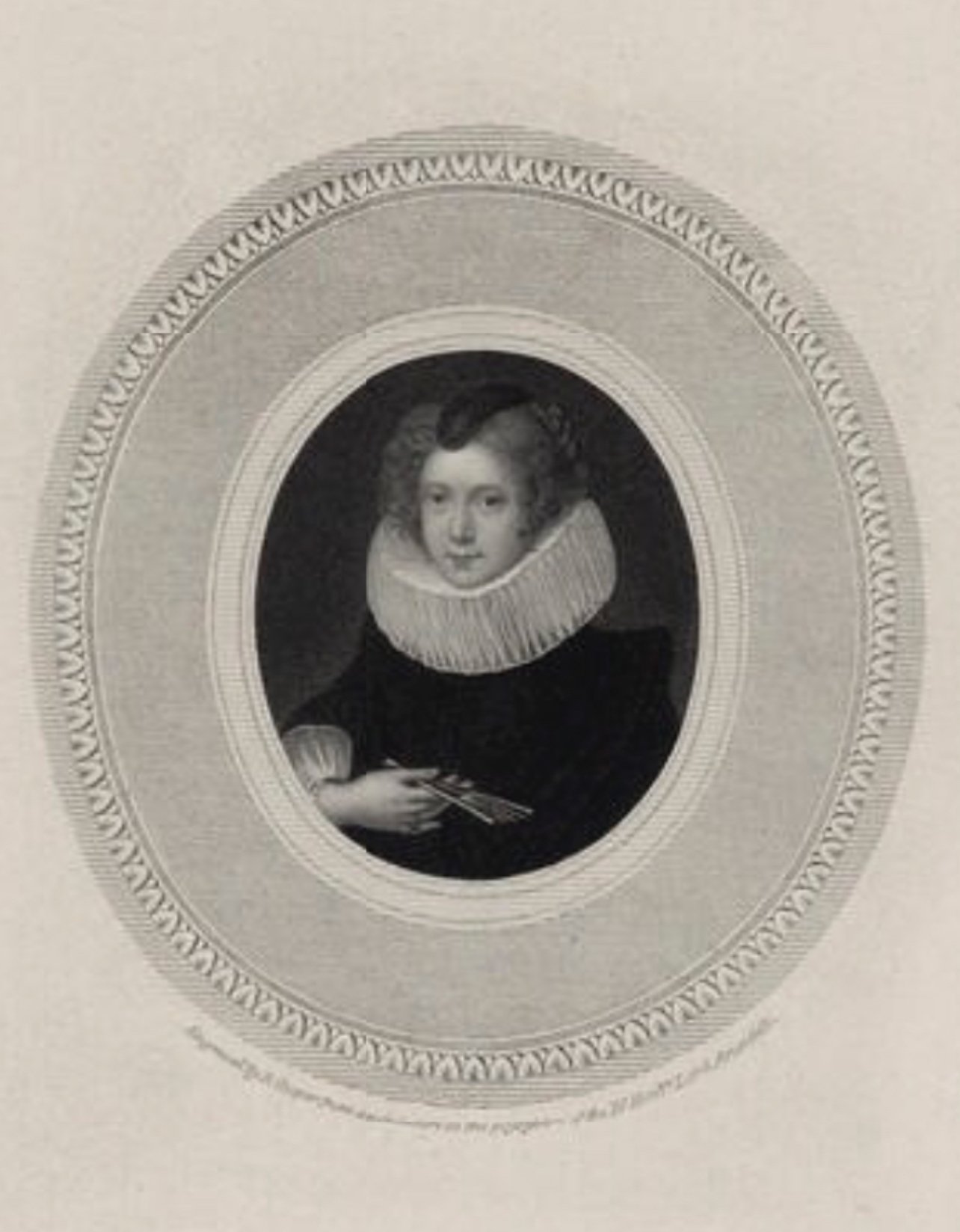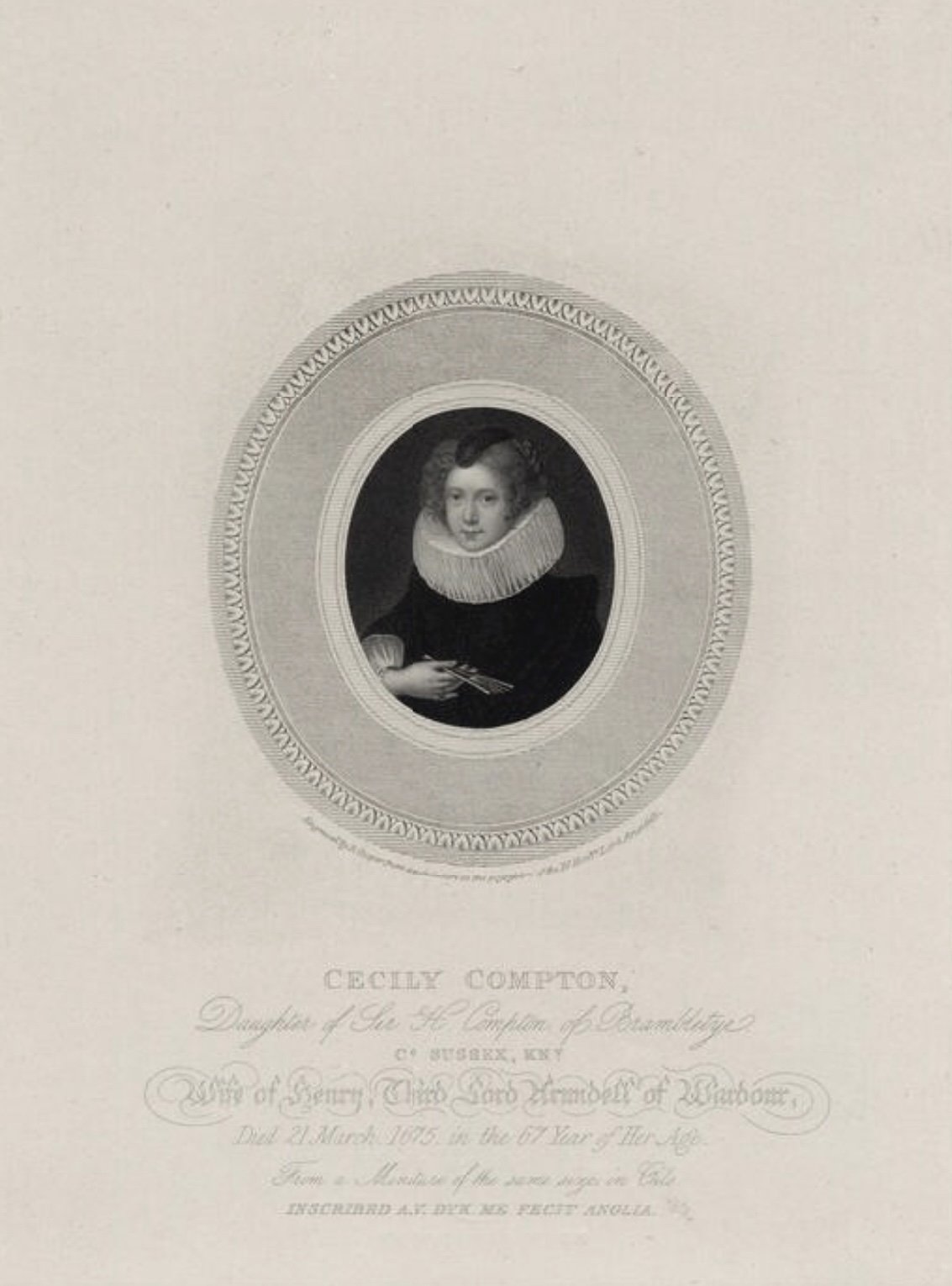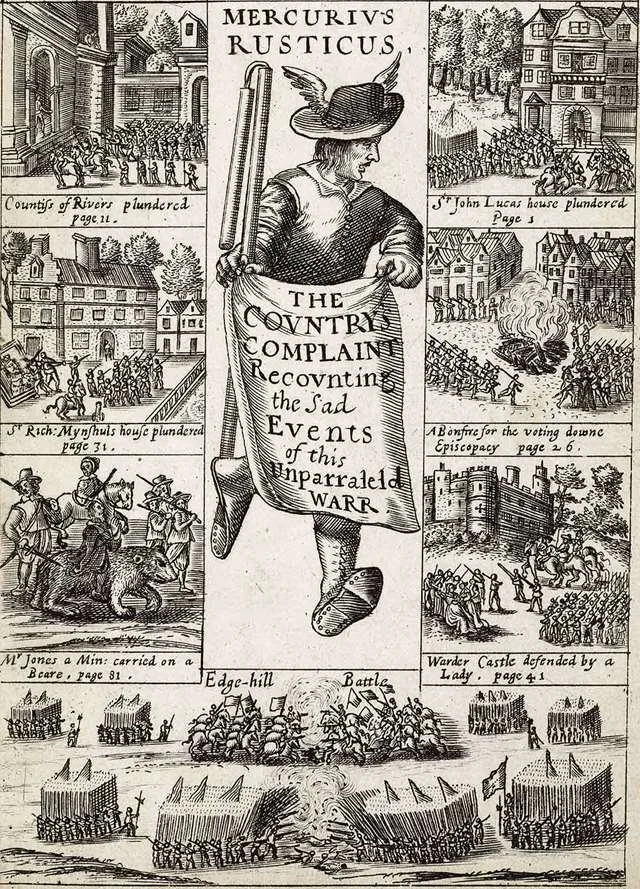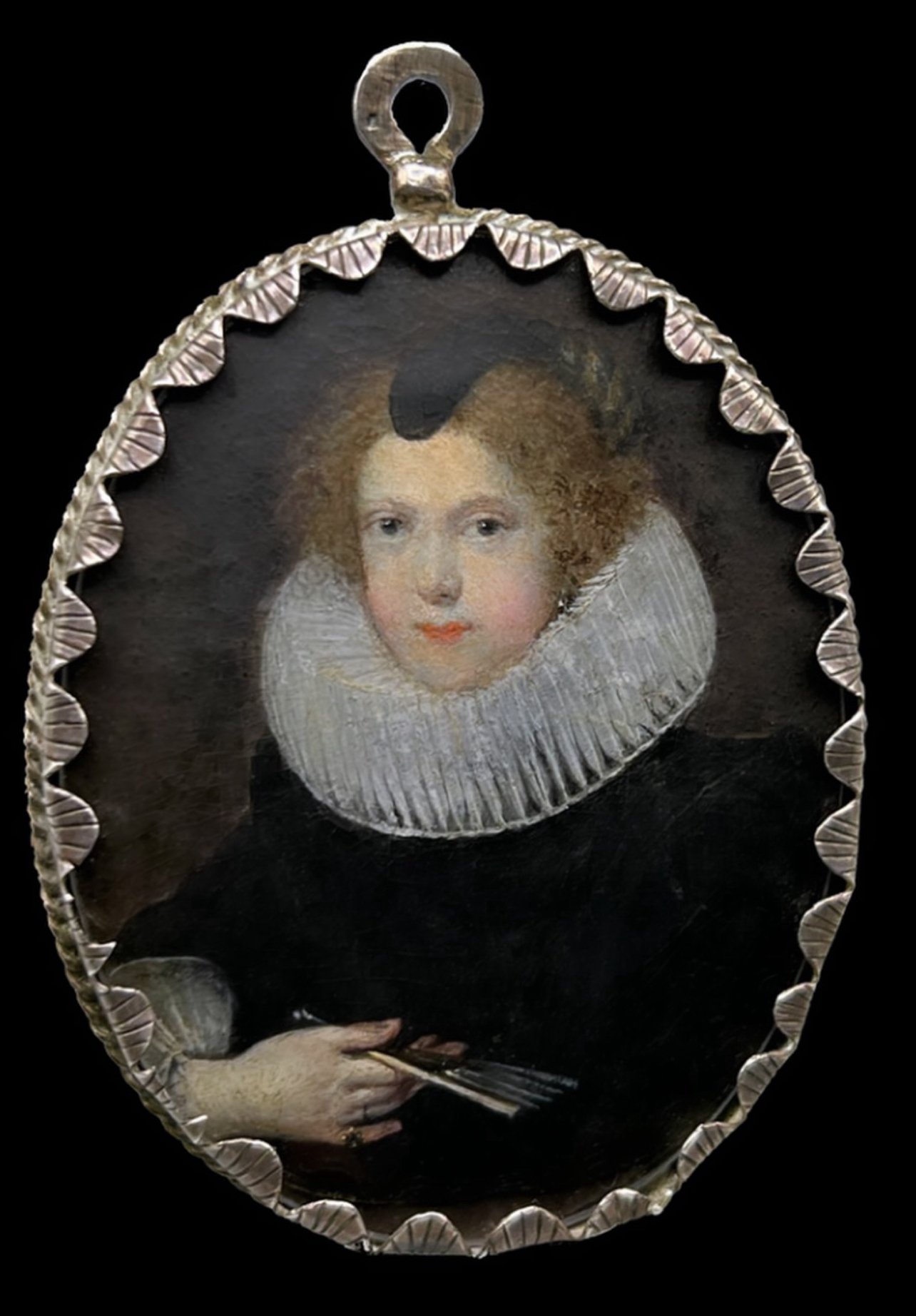



CICELY COMPTON, LADY ARUNDELL OF WARDOUR (1610-1676) - ATTRIBUTED TO ALEXANDER COOPER (1609 - 1660).
Watercolour on vellum Oval, silver frame 6,5 x 5,5cm
Cicely, Lady Arundell of Wardour (née Compton, c. 1610 – 24 March 1676)
Lady Cicely may have been the wife of Henry Arundell, 3rd Baron Arundell of Wardour of Wardour Castle, and also the daughter of the Hon. Sir Henry Compton KB of Brambletye, Sussex but she was also a significant historical personality in her own right.
A central figure in the Civil War siege of Wardour Castle between 2nd and 8th of May 1643, she held out alongside Lady Blanche Arundell, in the face of a besieging Parliamentarian army. They were surrounded by Parliamentarians who offered to spare the lives of the two women, the children and maids, but not the lives of the fighting men!
Despite this they both refused to surrender for several days, choosing ‘bravely … rather to die together than live on so dishonourable terms’. Finally forced to surrender they became famous amongst their fellow Royalists for their courageous stand. Cicely was taken from the castle and imprisoned and was released in the month of June 1643.
Cicely wears a deep and close set ruff rarely seen in British portraits, and although black was a very fashionable colour in the early 17th century, it is likely that she is in mourning. The iconography of Marie de Medici by Pourbus and later Rubens would support this view, as would the plainness of the sitters linen cuffs and the absence of any embellishment on her dress.
The cruciform jewel on the ring worn on her little finger is consistent with mourning jewellery and the foreshortened folding fan is a sophisticated touch that adds a vivacious dynamism to this delightful image.
See above a 19th century stipple engraving of this miniature by Robert Cooper at The National Portrait Gallery which aided this exciting new discovery.
£6200

